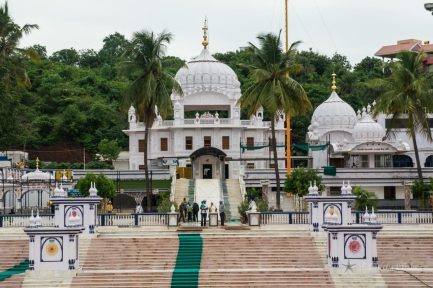
Sorry, we couldn't find anything that matches your search.
Destination

Famous Places to Explore in Hyderabad
A vibrant city with the imposing...

Raipur Tourist Places | Best Place to Visit
The stronghold of several erstwhile...

Ahmedabad
Declared as India's first UNESCO World...
#
Humnabad
Humnabad is home to the ancient temple of Lord Veerabhadreshwara that attracts thousands of visitors from far and wide. Veerabhadra is an important Hindi deity, who is believed to have been born out of the rage of Lord Shiva, after the death of his wife Goddess Sati (Shakti), at the yajna (fire ritual) of her father, king Daksha. Every January-February, a seven-day Veerabhadreshwara Jatra and cart pulling festival is held that draws a huge footfall. The temple was built by Raja Ramchandra Jadhav in 1725.

Guru Nanak Jhira
This religious attraction is testament to the diversity of the Deccan region of Bidar. Gurudwara Bidar is one of the holiest places for the Sikh community and consequently attracts a large number of believers, especially during the months of November and March. According to local legend, the land was under the grip of an excruciating famine when Guru Nanak visited it and miraculously made water spring forth from a laterite rock mountain. The thirst of the people was alleviated and this gave rise to the belief that the water that burst forth at the command of the Guru is capable of healing many ailments. The serenity of the Gurudwara Nanak Jhira is amplified by its natural surroundings that include a sarovar (lake) and an Amrut Kunda (sweet water pond). A langar (community kitchen) serves hot and nutritious food to all who come to the gurudwara and there are clean rooms for pilgrims who flock to the gurudwara from all corners of the country.

Solah Kamba Masjid
The Solah Khamba Masjid, or the sixteen-pillared mosque is one of the largest mosques in the country and the oldest surviving building in Bidar. Built in 1423-24 AD by Qubil Sultani, during the viceroyalty of Prince Muhammad, this mosque boasts massive columns, domes and arches. The architecture allows for plenty of fresh air and light. The landscape is open and spacious to accommodate the swarming numbers, who would come here during Friday prayers and important religious state functions. This mosque is also called Zanana Masjid as it is located near the Zanana enclosure. Other attractions nearby include the Gagan Mahal, Diwan-e-Aam, Takhat Mahal, Royal pavilion, Hazar kothari and Naubat khana. Jama Masjid and Kali Masjid are two other monuments nearby that should not be missed.

Papnash Shiva Temple
One of the most important temples of the region, the Papnash Shiva Temple is believed to have been built by Lord Rama on his journey back from Sri Lanka. It is said that he installed a shivling at this spot. Tourists can also visit a natural spring flowing into a pond in front of the temple, called papnash or the annihilator of sins. The festival of Shivratri is celebrated with a lot of pomp and devotees come from across the country to witness this grand event. A well-laid picturesque road from the bus station leads to the temple, which is nestled in the verdant valley. The temple is very ancient and a new temple has now been built on the slopes of the hill.

Narshimha Jhira Water Cave Temple
Also known as Narasimha Zarna cave temple and Jharani Narasimha temple, it is located within a cave with water running up to 30 m. There is no other way of reaching the deity, except by wading through knee-deep water. The cave is located in the Manichoola Hill range and the temple is open to the public from eight in the morning. Some devotees even believe in purification before seeing the lord so they take a quick bath in the fountain located right outside the cave temple. Also, be ready for the innumerable bats hanging from the roof!







